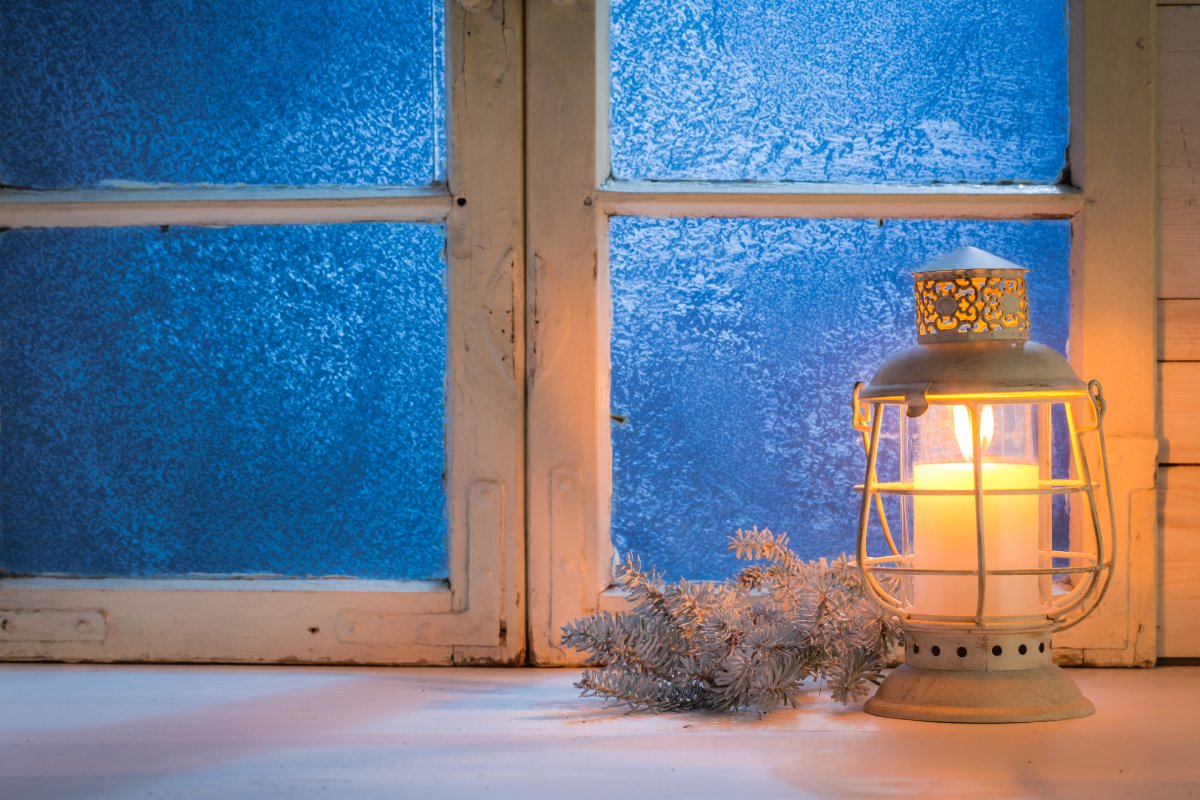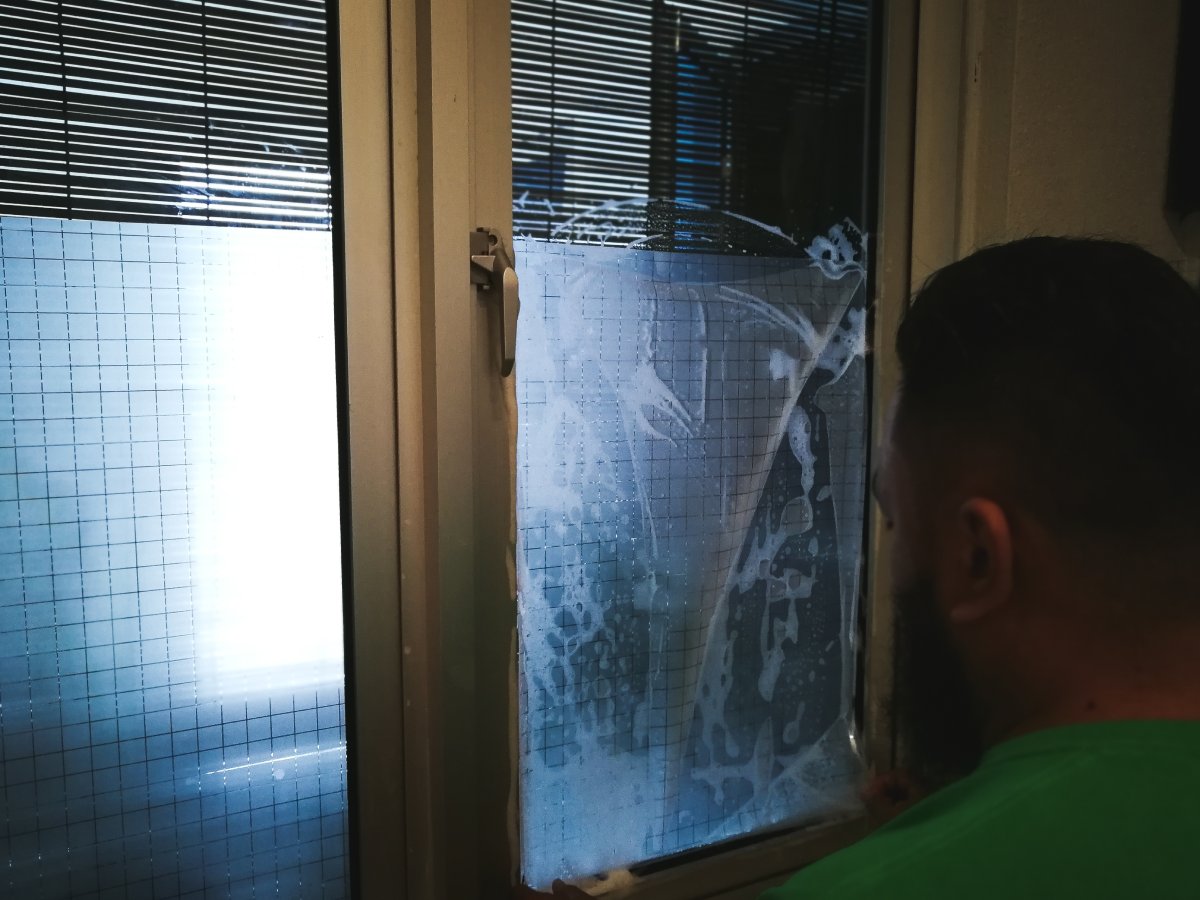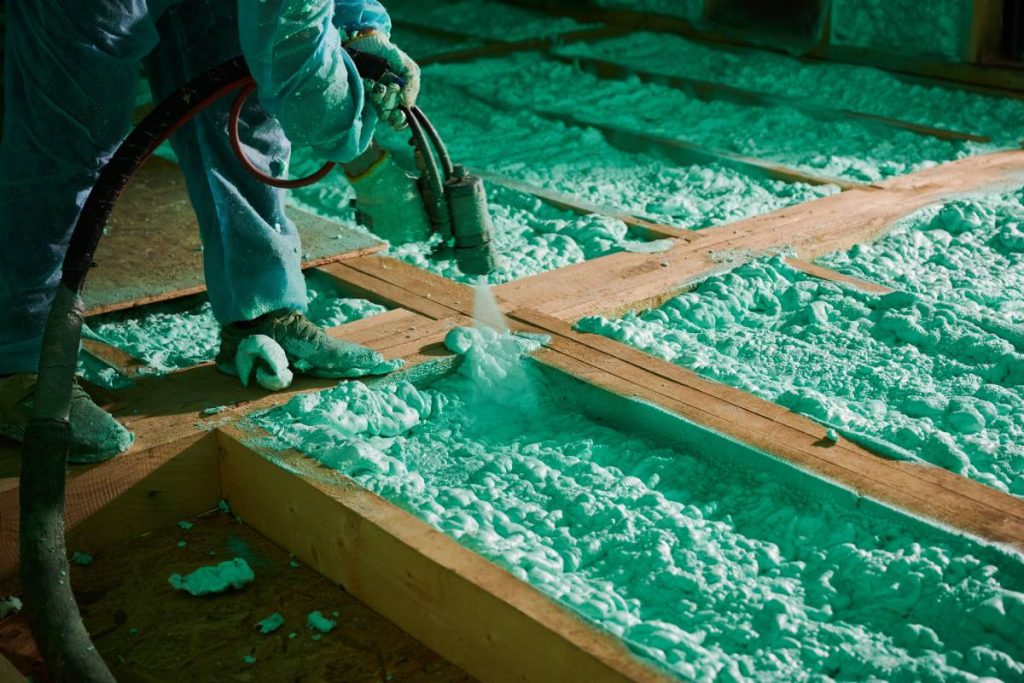What is window frosting called? How do you frost out a window? Are frosted windows outdated?

When a window is frosted, what is it called? Is there a way to frost a window by yourself or will you need to have them replaced entirely or hire professionals? And are frosted windows considered to be outdated and thus out of fashion?
In this article, we’re going to answer these questions in more detail as we explore window frosting in greater depth. Read on if you’d like to learn more…
What is window frosting called?
Window frosting is commonly referred to as “frosted glass” or “frosted window film”.
Frosted glass is typically produced by sandblasting a clear sheet of glass or acid etching it. This invariably creates a pitted surface on one side of the glass pain which subsequently renders it translucent, thus scattering any light that passes through and blurs the image. Frosted glass tends to have some 10-20% opacity, so while figures can somewhat be seen through frosted glass, details are impossible to discern, making them excellent for additional privacy in your home or property.

Frosted window film, however, is a window frosting technique whereby a sheet of material is applied to a clear pane of glass, thus obscuring the window and providing a very similar effect to frosted glass – absent the sandblasting or acid etching.
Of the two, frosted window film is the cheapest and easiest alternative.
How do you frost out a window?

So, how do you frost out a window? Can you apply window frosting to a window by yourself, or do you need to hire professionals? Naturally, as with anything, for the best possible finish, you are always better off hiring professionals. While there will be a labour charge involved, it’s a safe way to ensure that the window frosting process is taken care of absent any potential for mistakes. In any case, it is something that you can do by yourself with the correct equipment. Here’s a quick look at the process involved:
- Wait for the coolest point of the day: applying film when the sun is at its highest point in the sky is not recommended.
- Clean your windows thoroughly: the first step when frosting your windows is to clean them. You want to ensure that it is residue free and baby shampoo actually works exceptionally well for this. Simply fill a spray bottle with water and add a few drops of baby shampoo for good measure. Mix and spray!
- Measure and cut the film carefully: frosted window film can be purchased online or from your local hardware store. It’s always worth buying a little bit more than you need in order to account for any mistakes. Once you’ve got what you need, cut the film with an inch or so to spare in each direction.
- Coat the window with a light spray.
- Remove the tape backing and get ready to apply it: the backing can be quite tricky to pull off. To make life easier, you should always apply frosted window film with a partner. You can also use clear tape to the corners to help when peeling the film back. Once removed, lightly spray the back of the film with your solution (and spray your hands to prevent fingerprints on the inside of the film).
- Apply the film: from the top of the window, apply the film and slowly work your way down to the bottom. The spray solution is critical in keeping the application smooth while working out any air bubbles along the way. Once the film has been successfully applied to the window, take a step back and double-check that it is properly straight and centred. Now is the perfect time to make any quick adjustments before the adhesive starts to dry.
- Clear bubbles and wrinkles: the last thing you want is your frosted window film to dry with air bubbles and wrinkles in it so take a window squeegee and work any imperfections out towards the edges.
- Trim the overlap: once the bubbles are all worked out, now’s the time to trim the edges. You want to make sure that you handle the window with great care while it dries. Your best bet is to avoid touching it at all until a week has passed and everything is perfectly set.
Are frosted windows outdated?
A common question is whether frosted windows are outdated. The short answer is no – particularly when window frosting for privacy. In fact, frosted windows are and likely always will be popular in residential bathroom windows. Certainly, frosted window film is a cheaper and easier alternative to having your windows replaced with frosted glass. Similarly, it’s better to apply frosted film as it’s a non-permanent solution that can easily be reversed if need be.
Other alternatives to frosted windows include:
- Reeded glass: reeded glass is designed with convex ridges and is typically favoured in glass door panels and partitions.
- Fluted glass: fluted glass is very similar to ridged, only it has a concave style pattern across it.
- Wire glass: wire glass is less obscured and typically used in schools and places of business where higher durability is required. The wire prevents the glass from shattering when broken and has a clean and orderly appearance.
- Chicken wire glass: chicken glass has a much more rustic aesthetic when compared to wire glass and provides greater obscurity as well.
- Glass bricks: frosted glass bricks are great if you want a touch of retro while obscuring vision through an essential light source.
- Textured glass: if you’d like obscurity without regularity, textured glass has a bark-esque pattern.
We hope that you’ve found this article helpful. Don’t worry as to whether frosted glass is outdated and instead focus on the benefits that frosted window film can bring. Not only can you improve the overall aesthetic of your windows, but more importantly, you can stop people from looking into your property!
Recent Posts
- Couch Grass vs. Kikuyu: Effectively Managing Growth in Sydney
- What Do Gardeners Do? How to Earn a Decent Income as a Gardener
- Varicose Veins: Causes and Treatment
- Is it better to keep a freezer full or empty? What is the best thing to clean the inside of a fridge with?
- Why Does My Wood Floor Feel Hollow? Can I Fix the Hollow Spot in the Wood Floor Myself? How Much Does It Cost to Fix a Hollow Spot in My Wood Floor?
Recent Comments

What Do Gardeners Do? How to Earn a Decent Income as a Gardener

Why Does My Wood Floor Feel Hollow? Can I Fix the Hollow Spot in the Wood Floor Myself? How Much Does It Cost to Fix a Hollow Spot in My Wood Floor?

History of Denim and Jeans: What Makes Jeans and Denims Popular Throughout History?

What is spray foam insulation? How much does underfloor insulation cost in Australia?

Couch Grass vs. Kikuyu: Effectively Managing Growth in Sydney

What Do Gardeners Do? How to Earn a Decent Income as a Gardener

Varicose Veins: Causes and Treatment


